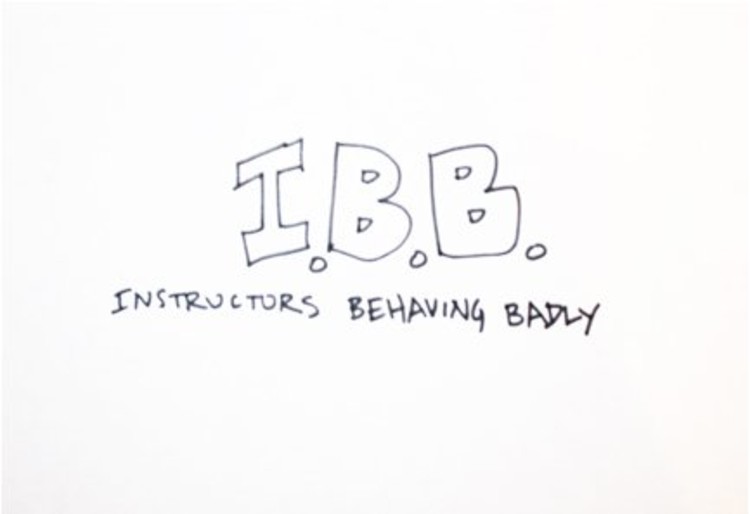
This article is co-authored by Sherin Wing
It’s the season for end-of-year juries before everyone escapes to the sanity of real life. And true to expectations, horror stories abound about instructors and jurors.
Here is one story: a student at a well-known Southern California program said that after spending five straight days at studio without returning home once (he clearly didn’t read The 101 in re: change your underwear and it’s not medicine), his instructor approached him and said one thing: “You’re F%#@$!”
Hey, thanks for that helpful and really insightful advice!
And if that weren’t enough, this same instructor had embarked on a campaign of concerted humiliation of this student, teasing him not just to himself, but repeatedly in front of his entire studio class regarding another student he supposedly had a crush on. That is clear harassment and she should not only be fired, but she is opening up the entire school to a lawsuit.
More after the break.
Sadly, this kind of behavior is not unique. Everyone has a story of unrepentant degradation and humiliation by an instructor whose abuse of power renders a sense of helplessness in the student. Ever here the one about the professor who used to tip students’ models into the trash as he walked through studio?
What’s even more distressing is that this behavior can replicate so that the once helpless student who becomes an instructor reproduces the same behavior as a kind of revenge, a la “Well, I had to deal with it.”

While on a few juries this past week, I recall that this phenomenon does not limit itself solely to instructors: jurors are equally culpable. A few examples of comments include “Clumsy” “Why did you do that? (How about because I intentionally wanted my project to suck?)” and snorting accompanied by a condescending scoff “Groundbreaking, hah!”
One jury spent an entire session arguing about the validity of Boolean operations in the 21st century and then blamed the student for sabotaging himself and his project by over-determining the discussion with this term. As one juror put it, “We all know this, so you shouldn’t bring it up.” Exactly! So why, then, did the jury spend almost the entire time talking about this? The jury should have turned it around immediately. Instead, everyone dog-piled and tried to come up with more creative and novel ways of trashing the project.
It’s true that at times, the most critical person on the jury does have something valid to say. But it’s also true that this is fairly rare. Most of the time, those who are overly critical are merely showboating their own presumed intellect or superior design skills. Alternatively, it’s a matter of mob mentality: when one starts, it’s easy for everyone else to join the chorus instead of thinking about the pedagogical and educational value it may have for the students.
And this is the point. The students. Helping them not only learn design skills, but to understand how to critically evaluate design for themselves. Of course, this is difficult when the emphasis is solely on models and boards, rather than real research (not Google) that shapes proposals.

In school, the student is the client. And instructors, many of whom are not trained professionally as teachers, need to remember that. It’s also important not simply to invite one’s friends to be jurors but professionals who possess a modicum of pedagogical training.
The fact is anyone can teach in architecture school as long as s/he has connections. That’s not the case for other graduate programs. There you need to undergo teaching apprenticeships where you’re guided not just by the professor but you are also rated by the students. Get too many negative reviews and you’re not asked to TA anymore. And as for trying to get a professorship, part of the application is submitting your teaching reviews as a graduate student. If those aren’t good, you’re not getting hired.
There is now an ongoing debate regarding the utility of studio juries. We all know that those are not going to be discarded anytime soon. But a good alternative is to institute teacher reviews—maybe even juror reviews! These are done at the end of each class, and are handed in by a member of the class to the administration. Different aspects of performance are rated on a scale, and those numbers are tabulated. If your numbers are consistently low, you should be discarded.

At some point, we need to dispense with the punitive, self-aggrandizing style of instruction that prevails in many architecture programs. Architecture education has to stop rewarding instructors who are terrible at teaching but eminently skilled at self-promotion and instead reward teachers who are serving the clients: the students.

